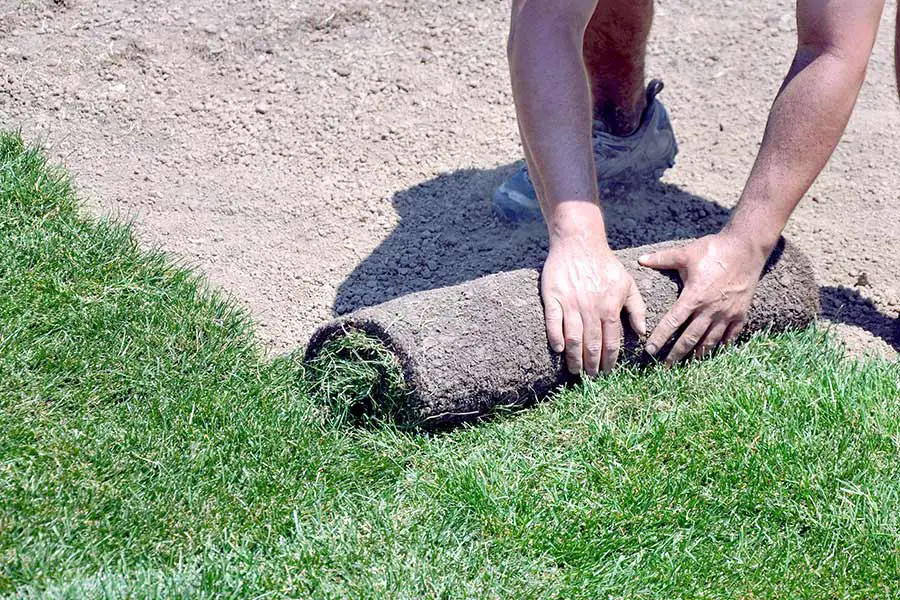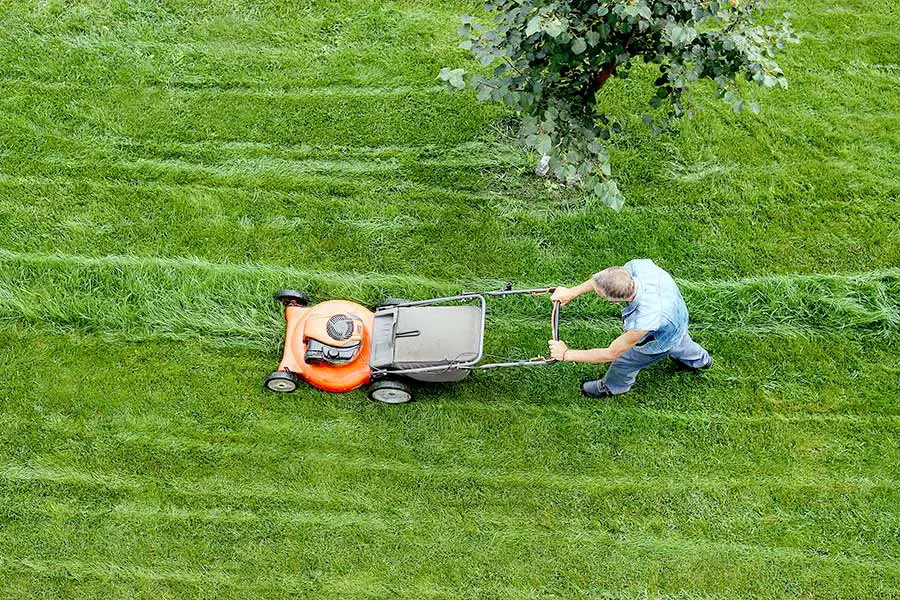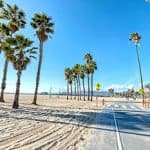
Your lawn is the first thing that guests see when arriving at your home. In addition to curb appeal, it’s where you spend time outdoors playing with your children or pets. It’s also a place for entertaining guests. There are over 11,000 different grass species on the planet, but not all grass is suitable for every climate. So, how do you know which seed to pick? What is the best type of lawn grass for the Bay Area?
Fescue grass is one of the best types of lawn grass for the Bay Area. Since the Bay Area has dry summers and less rainfall than the national average, you need to have grass that requires little water. Fescue is perfect because it’s durable, absorbs water well, and is more resistant to drought.
Having a great lawn is a lot more than just picking the right variety of grass. Continue reading for more information on how to plant your lawn, alternatives to fescue, and how to maintain your lawn to keep it looking great.
What is the Best Lawn Grass to Plant in the Bay Area?
In the United States, experts divide the country into three regions when it comes to planting grass. San Francisco and the Bay Area fall into the northern region, which requires grass that is suitable for cooler climates. In addition, the State of California is known for sunshine and long periods with little to no rainfall. Because of this, the grass you choose should also be resistant to prolonged sunlight and require little water.
The most popular type of grass that meets these criteria is fescue grass. This turf-type of grass has thick blades of grass that are very durable and handle good amounts of wear. It is also suitable for cold winters and can tolerate high temperatures and droughts. You can find fescue varieties such as Chewing’s fescue, creeping red fescue (which isn’t really red), hard fescue, and tall fescue.
Another popular alternative is Kentucky bluegrass. This grass is also turf-style grass that is known for its rich, vibrant color. While Kentucky bluegrass is also great for cooler climates, it requires more water than fescue, making it a little less drought resistant.
Fescue grass grows faster than Kentucky bluegrass, so it will require to be mowed a little more often.
Why Blending Grass Types is a Good Idea
Each type of grass has different attributes and qualities. Some have a more pleasing color. Others are more drought-resistant and require less water. Some types of grasses have thicker blades, making them more durable against heavy use (for example, if you have kids who like to play football with their friends in the yard). Tougher grass will help keep your lawn from getting destroyed or worn away, leaving dirt or mud patches.
For this reason, lawn experts recommend that you plant a blend of grass. A blend helps protect your lawn from a variety of environments that can destroy your lawn. In addition, selecting 2 or 3 different types of grass will improve your chances of avoiding the dreaded brown lawn or patchy lawn.
Other Posts of Interest
- Is It Hard To Drive In San Francisco?
- Is San Francisco An Island Or A Peninsula?
- How Much Is A Napa Valley Wine Tour?
- Is Ghirardelli Chocolate Made in San Francisco?
Planting Grass Seed Versus Laying Sod

There are two main ways to plant grass — planting grass seed or laying down sod. There are pros and cons to each of these methods.
Planting grass seed is by far the cheapest option. It’s easy to plant with the help of a spreader that can disperse seeds evenly and efficiently across the lawn. In addition, using seeds allows the grass to grow a more established root system compared to sod. A better-established root system can help the grass better absorb water and nutrients from the soil.
While sod comes in most of the popular varieties, you can get additional choices by selecting grass seed instead. Using seed gives you the ability to mix a blend that perfectly matches your lawn preferences. If you want 60 percent bluegrass and 40 percent fescue, no problem!
Sod is a more expensive option and costs about 10-20 times more than simply planting seed. Sod comes in rolls that weigh about 30 pounds each and require you to cut and trim the pieces as you lay them out. Doing it this way is back-breaking work. However, sod is an excellent option if you want to have a nice-looking lawn without having to wait weeks for your seed to sprout.
Bay Area Answers Fun Fact: Outdoor irrigation systems can lose over 6,000 gallons of water each month from a single leak. Check for leaks by looking for squishy areas in the lawn or standing water.
When is the Best Time of Year to Plant Grass in the Bay Area?
The best time of year to sow grass in the Bay Area is late summer to early fall. During this time of year, the ground is still warm enough to encourage faster germination. In addition, since new grass is more susceptible to harsh heat during summer, this allows the new grass to mature during the cooler months when there is more rainfall.
How Fast Does Grass Seed Grow?

The amount of time that your grass seed needs to sprout and grow will depend on the type of grass you pick for your lawn. For example, ryegrass (which can also be planted in the cooler Northern California climate) can germinate in only seven days. Fescue takes approximately ten days. Kentucky bluegrass takes the longest at 28 days to germinate.
How Often Should You Water New Grass Seed?
After new grass seed is planted, you want to make sure that your lawn gets plenty of water. You should water new grass twice each day until all of the grass seed has germinated. After germination, you can return to your normal watering schedule. Lawn experts in the Bay Area recommend watering a mature lawn 2-3 times a week.
What is Overseeding?
As your grass matures, its rate of growth slows. When this happens, it can cause your lawn to thin out and can lead to patches or bare spots. To prevent this, you need to introduce new, young grass to your lawn. Overseeding is the process by which you lay new grass seed over an existing lawn. By regularly replenishing your grass, you will ensure that you have a great-looking lawn that requires less major maintenance.
At a minimum, experts recommend that you overseed your lawn every 3 to 4 years. However, you could do this every year to ensure that your yard is always looking great. The best time of year to overseed your lawn is during late summer to early fall.

When overseeding your lawn, you need to cut the grass as low as possible before sowing the seed. Mowing beforehand will help the seeds reach the soil but also have enough sunlight to start growing.
Some people like to use a little fertilizer, but the most important factor is water. Check the instructions on the seed packaging for recommended watering instructions as too much or too little water can kill the grass.
As the seeds start to germinate, you want them to establish strong roots before you begin cutting the new grass. Resist the urge to cut your grass too soon after overseeding. You should wait at least 2 to 4 weeks after planting before you mow your grass. The longer you wait to mow your yard, the better the results will be.
Alternatives to Planting Grass
A popular trend in California is to ditch the traditional lawn and replace it with plants that are native and naturally occurring in the area. In addition to being good for the environment, using native plants provides a food source for native insects, bees, and birds.
These types of plants require little water, less maintenance, and are better suited to the California climate. Since the average lawn uses about 125 gallons of water per 1,000 square feet, this is great for a drought-prone state. Some cities are even beginning to encourage this through the use of tax credits or other incentives.
Picking the Right Lawn for Your Family
Your lawn is the perfect place to spend time with your friends and family outdoors. However, there are many choices when it comes to picking the right type of grass. If you are unsure of where to start, talk to a lawn care professional or landscaping company. They can not only help make recommendations but can also help plant the seed or lay sod.





